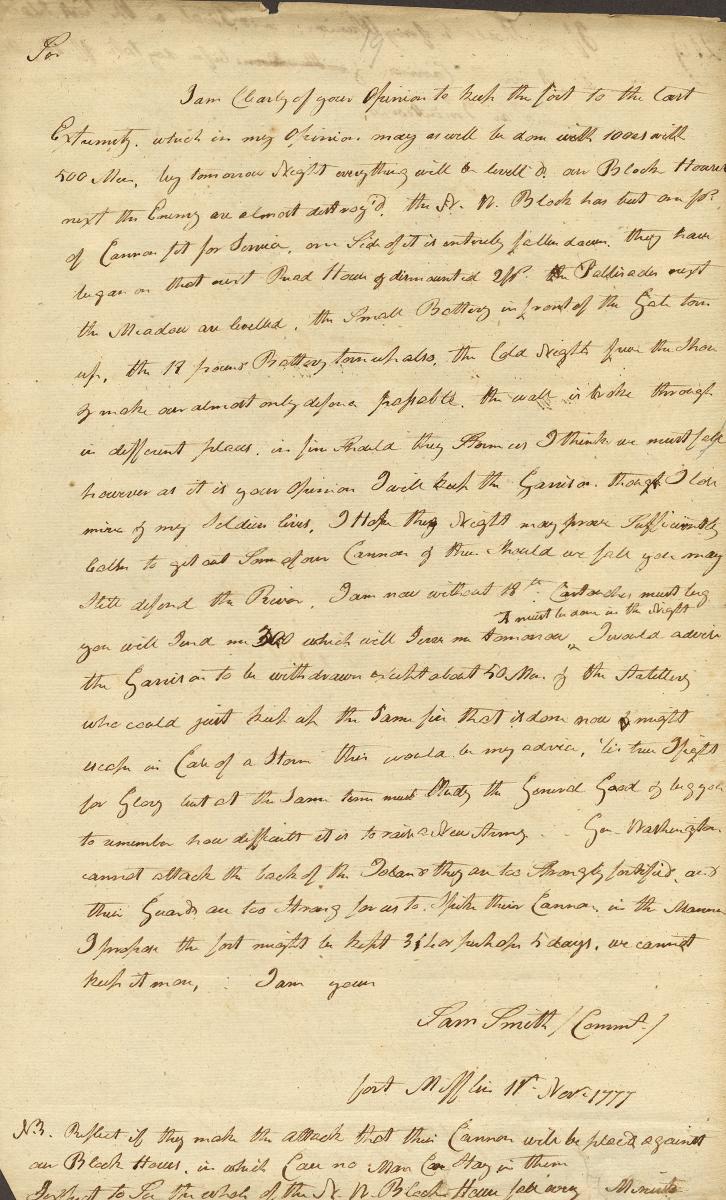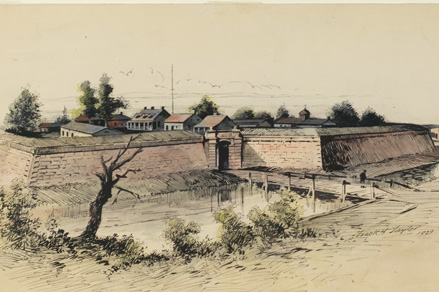For six weeks in the fall of 1777, the British fired upon Fort Mifflin along the Delaware River in an attempt to drive out American troops. This was one of the largest bombardments of the war and a pivotal moment in the American Revolution.
Construction of Fort Mifflin on what was referred to as Mud Island began in 1771. Funding and political issues caused delays, and the fort was not completed until 1775 by the Continental forces. It was named in honor of Major General Thomas Mifflin of the Continental Army, who later became Pennsylvania’s first governor.
Beginning in late September 1777, British forces under General William Howe began amassing forces on the mainland and islands near the fort. Fort Mifflin was under the command of Lt. Col. Samuel Smith, a native of Lancaster County, Pennsylvania, who had previously served with distinction at the famed Battle of the Brandywine.
In early October, the fort’s garrison of approximately 300 American troops engaged the British. British naval forces unleashed a heavy cannonade of artillery, largely from the five batteries located on Province Island some 400 to 500 yards away. Fighting continued for five weeks with neither side achieving a decisive advantage. During the siege, Gen. George Washington was in Whitemarsh Township, Montgomery County, with few troops or supplies to spare to aid the beleaguered fort.
 With the weather turning colder, General Howe needed a decisive blow. Beginning on the 10th of November, the British batteries hammered Fort Mifflin with 18-, 24-, and 32-pounders demolishing the barracks, blockhouse, and artillery pieces. American casualties were high, and Lt. Col. Smith was knocked senseless at one point by falling debris from a chimney. Writing from the fort on November 11, Smith still was hopeful that he would be able to hold out for another five days.
With the weather turning colder, General Howe needed a decisive blow. Beginning on the 10th of November, the British batteries hammered Fort Mifflin with 18-, 24-, and 32-pounders demolishing the barracks, blockhouse, and artillery pieces. American casualties were high, and Lt. Col. Smith was knocked senseless at one point by falling debris from a chimney. Writing from the fort on November 11, Smith still was hopeful that he would be able to hold out for another five days.
However, an American deserter carried intelligence to the British regarding the sad state of the fort’s reserves, and that news strengthened British resolve. With daylight on the 15th, the sounding of a bugle announced the incessant bombardment from both land and sea batteries of a barrage of missiles upon the fort. The sound was so loud that it reportedly shook buildings in Philadelphia and South Jersey.
In the first hour, it is estimated that more than a thousand cannon balls were fired, which practically leveled the fort. On the evening of the 15th, with the American flag flying overhead, the survivors of the battle escaped across the river to Red Bank, New Jersey. When British forces entered the next morning, they found Fort Mifflin abandoned and destroyed.
Although an American defeat, the battle of Fort Mifflin demonstrated the tenacity and patriotism of the American forces. Delaying the British for six weeks allowed Washington and his tattered army to reach and encamp at Valley Forge. Without the actions of the troops in the fort, it is quite possible that British forces would have attacked Washington’s army, and the outcome of the Revolution could have been very different. This battle earned Fort Mifflin the moniker, “The Fort that Saved America.”
 In 1795, Fort Mifflin was rebuilt and remained an active military base until 1954. It functioned as a prisoner-of-war camp during the Civil War and was part of Naval Ammunition Depot during World War I & II. It was designated a National Historic Landmark in 1915. Fort Mifflin still stands today on the Delaware River, at the mouth of the Schuylkill, as a testament to the will and determination of the American spirit.
In 1795, Fort Mifflin was rebuilt and remained an active military base until 1954. It functioned as a prisoner-of-war camp during the Civil War and was part of Naval Ammunition Depot during World War I & II. It was designated a National Historic Landmark in 1915. Fort Mifflin still stands today on the Delaware River, at the mouth of the Schuylkill, as a testament to the will and determination of the American spirit.

